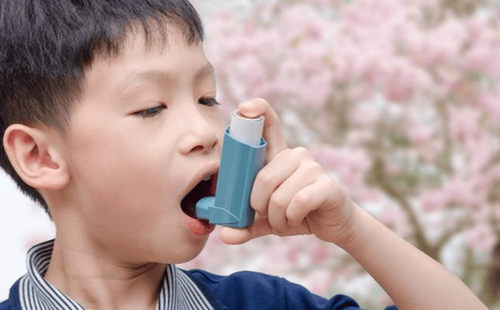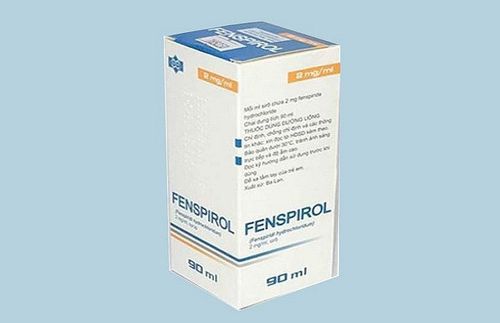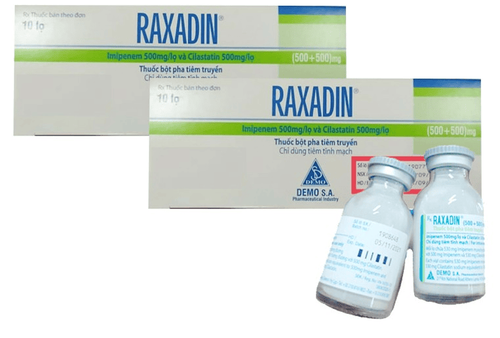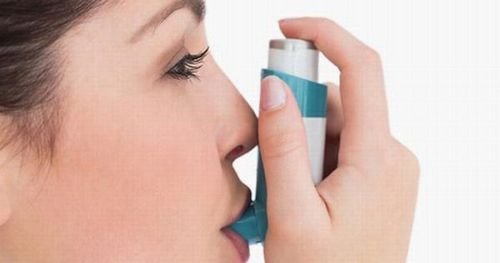This is an automatically translated article.
The article was written by Doctor Duong Thuy Nhung - Department of Internal Medicine, Vinmec Times City International Hospital.Asthma has become a global health problem, seriously affecting the quality of life of patients, families and society. However, asthma can be completely controlled if it is treated correctly and the patient follows the doctor's instructions. Understanding asthma helps you plan for effective care and treatment of asthmatics.
Causes of bronchial asthma and its impact on children's lives
1. Causes of Bronchial Asthma
Although the causes of bronchial asthma in children have not been fully identified, experts say that there are many types that are capable of causing asthma or causing a high risk of asthma.It is easy to notice that every time the weather changes from warm sunny to cold, northeast monsoon, tropical depression, wet, children catch cold due to not wearing warm enough, bathing in drafts, wearing clothes get wet (due to children playing in water or when the child "pees his pants" without adults knowing...) then in children with a history of bronchial asthma, it is easy to relapse.
In addition, respiratory infections caused by microorganisms (such as nasopharyngitis, VA, bronchitis, bronchioles), some foods (such as shrimp, crabs, snails...), feathers of some animals kept at home (like dogs, cats...), some insects, mites, especially chicken mites, some medicines, or sometimes physical exertion (cry, run and jump a lot, play too much... ) is also one of the high risks for children with a history of recurrent asthma.
The problem of smoke and dust is also one of the issues to be concerned about. Cigarette smoke, pipe tobacco released by adults on a regular basis, kitchen smoke from burning straw, firewood, garbage, especially smoke and gas from coal stoves (honeycomb coal); The most dust is in urban areas, environmental sanitation, environmental sanitation, and industrial hygiene are not good, which are high risk factors for children to have asthma attacks.
In addition, genetic factors are also one of the causes of bronchial asthma in children. If one parent is sick, their child has a 30-50% chance of having asthma. If both husband and wife have asthma, this rate in children is 50-70%. If neither parent has asthma, the chance of this in the child is 10-15%.

Hen phế quản ở trẻ em
2. Factors that trigger an asthma attack
Colds/respiratory infections. Exercising (exercise, play, crying, emotional overreaction). Cigarette smoke, coal smoke. House dust mites. Pollen. Mold. Scales, skins, animal hair. Food additives and food preservatives. Some pharmaceuticals and cosmetics.
3. Impact of Asthma in Children
There are many possible asthma triggers or high risk factors for asthmaAsthma, if well controlled, will not affect a child's physical or mental functioning. Children can play all kinds of sports like other normal children. If sports activities cause an asthma attack, your child can be prescribed medication by a specialist for prevention and protection during sports. Asthma cannot be completely cured, but it can be completely controlled if the family follows the treatment and prevention regimen of a specialist.
4. Signs of bronchial asthma in children
For mild bronchial asthma, which usually occurs with exertion (cry, excessive running, etc.), manifests as a cough such as whooping cough, can speak long sentences without interruption. Listen to the lungs and hear a rasping sound at the end, then exhale.For moderate bronchial asthma, the cough appears when the child exerts himself, his voice is interrupted, and he begins to see signs of chest pulling, sternal depression, and supraclavicular fossa. A rasping sound is heard when exhaling.
For severe bronchial asthma, shortness of breath, cough at rest, bulging nostrils; young children unable to suckle; the phenomenon of pulling on the thorax, the sternum, the supraclavicular fossa is very clear; look at the child's lips see purple. Talking or crying is very difficult (word-by-word). Loud crackles are heard in the lungs both when the child exhales and inhales.
In bronchial asthma, if there is a fever, it is very likely that the child has a respiratory infection caused by microorganisms
For a very severe (malignant) asthma attack, the child has severe difficulty breathing, cannot cry or speak and now hear the lungs no longer see rales. Asthma attacks occur continuously for many days if there is no timely intervention.
In bronchial asthma, if there is a fever, it is very likely that the child has a respiratory infection (either upper or lower respiratory tract) caused by microorganisms (bacteria, fungi or viruses).

Có 4 mức độ bệnh hen phế quản ở trẻ
5. Methods of prevention of bronchial asthma
It is necessary to dress children warmly in the cold season, especially when going out of the house. Only bathe the child when there is no asthma attack (the child still eats and plays normally). Shower in a room without drafts, take a warm bath, need to take a quick shower. After bathing, dry the child immediately, wipe with a dry towel and dress the child immediately. In the cold season, each time you prepare to bathe and wash your child, you should prepare some means such as: clean clothes, a heater, and a hot air conditioner (if possible) so that after bathing and washing, the child will be in immediate contact with Warm air, sudden cold restriction makes children more susceptible to colds and the risk of asthma attacks in children with a history of asthma.For children with a history of bronchial asthma, do not let them eat or drink foods with a high risk of asthma attacks.
For children with a history of bronchial asthma, do not let them eat or drink foods with a high risk of asthma attacks such as shrimp, crab, snail. Parents and adults should not smoke in the house. If it is not possible to use an electric stove or a gas stove, it is advisable to improve the stove for burning wood, straw, and straw with a low-smoke stove. Do not keep dogs or cats in the house. It is necessary to prevent chicken mites from hiding in blankets, pillows and cushions by drying blankets, pillows and cushions in the sun whenever possible. In the child's bedroom, the house should not be swept with a broom, but should be dusted with a wet towel, vacuumed with a vacuum cleaner (if possible).
Children who have ever had bronchial asthma and have been consulted and treated by a doctor should follow the doctor's instructions, especially need to be treated for asthma under the guidance of a specialist. Because when children have bronchial asthma, in addition to the treatment of asthma relief, there is also preventive treatment. On the other hand, the treatment of asthma in children is not the same as that of adults in terms of drugs, dosage, usage...
6. Diet of children with bronchial asthma
Children with bronchial asthma should avoid spicy foods commonly found in salads, soft drinks and canned foods, fermented drinks, pickled vegetables or pickles, and fruits. Dried packaged, processed or some sea food (shrimp, crab, crab, seasoning sauce).Of course, not all of the above foods need to be abstained, but you should keep an eye on what foods your child is often allergic to, when eating which foods often have an asthma attack for prevention and isolation. In addition, children should also abstain from foods that can cause allergies to their own body. At the same time, it is necessary to be immediately alert to some medicines such as antibiotics, aspirin...
Need to eat more foods containing vitamin C, magnesium and Omega 3 fatty acids. People find the lack of vitamin C combined with polluted air conditions increase the cases of asthma, especially for children.
Please dial HOTLINE for more information or register for an appointment HERE. Download MyVinmec app to make appointments faster and to manage your bookings easily.













